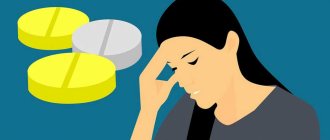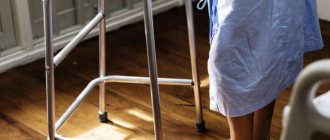Treatment of the disease
Treatment of torsion dystonia is conservative and surgical.
- Surgery:
- Stereotactic operations are indicated in cases where the disease rapidly progresses and deprives the patient of the ability to work and the ability to self-care. Stereotactic operations are aimed at destroying brain structures and are responsible for pathological impulses. Preparation for such an operation takes place in several stages. First, a special stereotactic frame is attached to the patient's head. A magnetic resonance or computed tomography scan of the brain is performed. Then, using special calculations using a tomogram and stereotaxic landmarks, the coordinates of the target structure are calculated. The surgeon accesses the required part of the brain and destroys the required structures in various ways. The duration of the disease and its severe course in the later stages are not contraindications to surgical intervention. After stereotactic operations, hyperkinesis and muscle rigidity in most cases decrease or disappear;
- it is possible to perform surgical interventions on peripheral nerves (neurotomy, radiotomy) for local forms of torsion dystonia. At the same time, their pathological effect on muscle groups is eliminated;
- in the later stages of torsion dystonia with joint deformities and muscle contractures, orthopedic operations are sometimes performed, so patients may also need the help of an orthopedic surgeon to correct pathological processes in the joints.
- Electrical stimulation of subcortical structures is the latest technique, which consists in the fact that electrodes producing electrical discharges are implanted into the area responsible for pathological impulses. These impulses suppress the activity of the pathological area of the brain. The operation is also performed using stereotactic guidance. After determining the coordinates of the target structure, the surgeon performs surgical access under intraoperative X-ray control and installs electrodes in certain subcortical nuclei. The neurostimulator itself, which produces electrical impulses, is a small device that is implanted into the subcutaneous fatty tissue of the subclavian region. After surgery, high-frequency electrical impulses are constantly sent to the patient's brain. In addition, the patient can adjust the parameters of the neurostimulator depending on his state of health.
- Drug therapy consists of prescribing certain groups of medications:
- anticholinergics;
- benzodiazepines;
- neuroleptics;
- anticonvulsants;
- muscle relaxants;
- Botox injections;
- GABAergic drugs;
- tranquilizers;
- glucocorticoids;
- adrenergic blockers;
- B vitamins.
Local forms of torsion dystonia (spasm of the hand, torticollis, adducted feet) are treated with botulinum toxin. It blocks the transmission of nerve impulses in those muscles in which spasm occurs.
Therapeutic gymnastics - anaerobic physical activity has a positive effect on the course of torsion dystonia. Hydrotherapy is also indicated.
Pathogenesis and clinical manifestations
Direct torsion dystonia develops as a result of a disturbance in the metabolism of the neurotransmitter dopamine in the extrapyramidal system of the brain (subcortical motor center). In this case, two forms arise - dopamine-dependent (rigid) and dopamine-independent (hyperkinetic). This is a very important point, since the treatment will vary for different forms. It is also known that the autosomal dominant variant is milder than the autosomal recessive variant.
An important sign of torsion dystonia is its gradual development. Initially, the patient complains of small rotational spasms in various parts of the body, most often on the extremities (especially the lower ones). This usually occurs on one side of the body. In this case, difficulties with walking very often arise.
Subsequently, such corkscrew-like spasms begin to appear much more often in other parts of the body. This is the so-called local form. It can become generalized, in which large muscle groups are involved. Symptoms intensify if the patient tries to concentrate and make the right movement. During sleep, symptoms of the disease usually disappear.
If the hyperkinetic form is characterized by clonic convulsions (i.e., muscle contraction is followed by its relaxation), then with the rigid form spastic ones develop (convulsions in which the muscles are tense for a long time). In this case, fixed pathological postures arise, both in local areas and in the entire body.
With the further development of torsion dystonia, complications such as writer's cramp, contractures, joint deformation, curvature of the spine and torticollis appear. The gait changes, and disturbances in speech, chewing, swallowing, and breathing may occur. Due to the constant load on the muscles, their hypertrophy occurs.
Diagnosis of the disease
The diagnosis is made based on clinical data. Usually it is not in doubt if there are already cases in the family.
Methods of analysis and diagnostic tests indicated for this pathology:
- X-ray examination.
- Electromyography - allows you to identify disturbances in the activity of electrical potentials of muscles.
- Magnetic resonance imaging of the brain and spinal cord - to assess areas of damage.
- Electroneuromyography - allows you to evaluate the electrical activity of skeletal muscles and peripheral nerves.
- Electroencephalogram - helps to identify disturbances in the bioelectrical activity of the brain.
Differential diagnosis is carried out with torsion-dystonic syndromes, especially those caused by the chronic form of epidemic encephalitis and hepatocerebral dystrophy. Differential diagnostic significance for epidemic encephalitis is the acute development of the disease, sleep disturbance, diplopia, convergence insufficiency, gaze convulsions, autonomic disorders and, in later stages, symptoms of parkinsonism. Hepatocerebral dystrophy, in contrast to torsion dystonia, is characterized by a low level of ceruloplasmin in the blood, the presence of a Kayser-Fleischer ring (deposition of a greenish-brown pigment containing copper on the periphery of the cornea of the eyes), and cirrhosis of the liver.
Other diseases of the extrapyramidal system that occur with torsion-dystonic syndromes differ from torsion dystonia in that they do not progress and undergo reverse development (to varying degrees) with a decrease in the frequency and severity of hyperkinesis. In their clinical picture, along with hyperkinesis, there are other symptoms of brain damage that are not observed with torsion dystonia.
Etiology of the disease
Depending on the cause of its occurrence, the pathology has two forms:
- idiopathic torsion dystonia (familial);
- symptomatic dystonia.
In the first case, it is a hereditary disease. It is most often transmitted in an autosomal dominant manner, but recessive and X-linked forms are also found. Usually, in this case, one of the closest relatives already has a similar pathology.
Symptomatic dystonia appears against the background of other diseases, which result in damage to brain structures. These include:
- brain tumors;
- traumatic brain injuries;
- Huntington's chorea;
- cerebral palsy;
- tick-borne encephalitis;
- poisoning (including alcohol);
- parasitic diseases (giardiasis, toxoplasmosis);
- birth injuries.
Prices
| Disease | Approximate price, $ |
| Prices for diagnosing migraine | 7 060 — 8 260 |
| Prices for diagnosing childhood epilepsy | 3 100 — 4 900 |
| Prices for brain shunting for hydrocephalus | 33 180 |
| Prices for treatment of Parkinson's disease | 58 600 |
| Prices for migraine treatment | 9 680 |
| Prices for the diagnosis of amyotrophic lateral sclerosis | 6 550 |
| Prices for diagnosing epilepsy | 3 520 |
| Prices for rehabilitation after a stroke | 78 300 — 82 170 |
| Prices for treatment of childhood epilepsy | 3 750 — 5 450 |
| Prices for treatment of multiple sclerosis | 4 990 — 17 300 |
conclusions
Torsion dystonia is a fairly rare disease of hereditary etiology. In some cases, an acquired form develops. With this pathology, the structure of the extrapyramidal system of the brain is disrupted, which leads to the occurrence of tonic and spastic convulsions and the formation of pathological postures. As the disease progresses, it provokes the development of serious complications and significantly worsens the quality of life of patients. However, with proper and timely treatment, the prognosis is quite favorable.
Classification of dystonias
One classification of dystonia divides them depending on the parts of the body involved in the condition:
- Generalized dystonia affects most or all of the body.
- Focal dystonia is localized in a specific part of the body.
- Multifocal dystonia involves two or more areas of the body.
- Segmental dystonia affects two or more adjacent parts of the body.
- Hemidystonia affects one side of the body
Some types of dystonia are distinguished as separate syndromes:
Torsion dystonia , which was previously called muscle deforming dystonia, is a rare form of dystonia, has a genetic determinacy, usually begins in childhood and steadily progresses. Torsion dystonia leads to severe physical defects and often severe disability. Genetic research has identified the cause of this form of dystonia (many patients had mutations in a gene called DYT1). It has also been noted that this gene is associated not only with generalized dystonia, but also with some forms of focal dystonia. However, there is evidence that most dystonias are not associated with this gene defect and have an unknown cause.
Cervical dystonia , or spasmodic torticollis, is the most common focal dystonia. With spastic torticollis, the muscles that control the position of the head are affected, resulting in twisting and turning of the head to one side. In addition, the head may be tilted forward or backward. Spasmodic torticollis can occur at any age, although most people experience onset symptoms in middle age. Spasmodic torticollis begins slowly and, gradually progressing, stops at one level. In 10 to 20 percent of patients with spasmodic torticollis, remission occurs, but, unfortunately, remission is not permanent.
Blepharospasm , the second most common type of focal dystonia, is the involuntary, forced closure of the eyelids. The first symptoms may be uncontrollable blinking. Initially, only one eye may be involved, but eventually the muscles of both eyes are involved. Spasms can lead to complete closure of the eyelids, resulting in functional blindness, although the eyes themselves and vision are normal.
Cranial dystonia is a term used to describe dystonia that affects the muscles of the head, face and neck. Oromandibular dystonia affects the muscles of the jaw, lips and tongue. The jaw may move forward, drop or close, and swallowing and speech problems may occur. Spasmodic dysphonia affects the muscles of the larynx that control speech, which can cause problems with speech, breathing, or hoarseness in the voice. Meig's syndrome is a combination of blepharospasm and oromandibular dystonia and sometimes spasmodic dysphonia. Spasmodic torticollis is also sometimes classified as cranial dystonia.
Writer's cramp is a dystonia that affects the muscles of the hand and sometimes the forearm, and only occurs when writing. Such coordination dystonias are also called typist's cramps and musician's cramps.
Dopa -dependent dystonia (DDD), one of which is Segawa dystonia, responds quite well to treatment with drugs of this group (levodopa), which are usually used to treat Parkinson's disease.
Typically, DLD begins in childhood or adolescence, with progressive deterioration of gait and, in some cases, the presence of spasticity. In Segawa dystonia, symptoms may fluctuate throughout the day from relative mobility in the morning, with gradual worsening in the afternoon and evening, and after exercise. The diagnosis of DDD may not be made in a timely manner, since this form of dystonia in its symptoms resembles cerebral palsy. In addition, there are forms of dystonia that may have a clear genetic cause: DYT1 dystonia is a rare form of dominantly inherited generalized dystonia that can be caused by a mutation in the DYT1 gene. This form of dystonia usually begins in childhood, first affecting the limbs, and progresses steadily, often causing disability. Because the effects of a gene mutation are not always seen, some people with a gene mutation may not have dystonia.
Recently, researchers have identified another genetic cause of dystonia associated with mutations in the DYT6 gene. Dystonia caused by a mutation in the DYT6 gene often manifests as craniofacial dystonia, cervical dystonia, or hand dystonia.
Many other genes that cause dystonic syndromes have been identified in recent years. Some important genetic causes of dystonia include mutations in the following genes: DYT3, which causes dystonia associated with parkinsonism; DYT5 (GTP cyclohydrolase 1), which is associated with dopa-dependent dystonia (Segawa disease); DYT6, associated with several clinical manifestations of dystonia; DYT11 - causes dystonia associated with myoclonus, DYT12 - causes the rapid development of dystonia associated with parkinsonism.
Mechanism of development of dystonia
Scientists believe that dystonia occurs as a result of dysfunction in an area of the brain called the basal ganglia, where information from impulses that enter the brain during muscle contractions is processed. Scientists suggest that there is a disruption in the body's production of a certain group of chemicals (neurotransmitters) that allow brain cells to communicate with each other. Some of these neurotransmitters include:
- GABA (gamma-aminobutyric acid), an inhibitory substance that helps the brain control muscles.
- Dopamine, a chemical that has an inhibitory effect on motor activity in the brain.
- Acetylcholine, an activating chemical that helps regulate the action of dopamine in the brain. In the body, acetylcholine is released into nerve endings and causes muscle contraction.
- Norepinephrine and serotonin, inhibitory substances that help the brain regulate the action of acetylcholine.
Acquired dystonia, also called secondary dystonia, is the result of the influence of exogenous factors or diseases that lead to damage to the basal ganglia. Birth trauma (particularly due to cerebral hypoxia), certain infections, reactions to certain medications, heavy metals or carbon monoxide poisoning, trauma, or stroke can lead to dystonic symptoms. Dystonia can also be symptoms of other diseases, some of which may be hereditary.
About 50% of cases of dystonia have no connection with disease or injury and are called primary or idiopathic dystonia.
Some cases of primary dystonia may have different types of inherited patterns.
Tiki
Introduction. Tourette's syndrome (Tourette's disease, Gilles de la Tourette's syndrome) is a hereditary disorder in the form of a combination of tic-like twitching of the muscles of the face, neck and shoulder girdle, involuntary movements of the lips and tongue with frequent coughing and spitting, coprolalia (pronouncing swear words). Most often caused by damage to the striatum, but can also be functional in nature. The movements are of the same type in their manifestations (sharp, fast, impetuous), sometimes patients cause serious injuries to themselves because they cannot control sudden movements. In half of the cases with Tourette's syndrome, vocal tics with indecent swear words, as well as indecent gestures, are possible. At the same time, patients are well aware of the unacceptability and inadequacy of their behavior, but they cannot control their behavior in any way. The disease occurs in 0.05% of the population, mainly in children. 3 times more common in men (95% of them aged 2-5 years). It can also occur in adolescents aged 15 to 18 years. The criteria for the diagnosis of Tourette's syndrome, according to the American Association's Tourett Syndrome Project, are:
- onset of the disease before the age of 20 years;
- the presence of repeated, involuntary, rapid, non-targeted movements involving many muscle groups;
- presence of one or more vocal tics;
- change in intensity, severity of symptoms over a short time, wave-like course with the presence of exacerbations and subsidence of symptoms;
- duration of symptoms for more than a year.
Treatment.
For treatment, pimozide (Orap), clonidine (Catapres, clonidine), haloperidol are used. Sedatives, therapeutic exercises, and massage are also used. The duration of treatment is 2 months. and more. However, even if there is a positive effect, patients require constant maintenance therapy. The prognosis for life is favorable. Side effects of treatment include excessive weakness, weight gain, dysphoria, parkinsonism, intellectual smoothing, memory problems, personality changes, school and social phobias, sexual disorders, torsion dystonia, severe autonomic disorders - constipation, dry mouth, fog before the eyes, agranulocytosis, jaundice. Monotherapy, however, is often insufficient to completely correct disorders in Tourette's syndrome. Therefore, some clinicians prefer to carry out complex therapy. The implementation of combination therapy in practice is always difficult, and it is especially difficult to implement when the basic drugs are psychotropic. Among the combinations tested to date, a treatment regimen that includes a combination of haloperidol and clonidine deserves attention. Deep brain stimulation (DBS), in a limited number of studies, has shown promise as a treatment for reducing tics in adults. In this procedure, electrodes are surgically placed in specific areas of the brain. These electrodes are connected to a device that is surgically placed under the skin in the subclavian area (stimulator). The stimulator sends signals to electrodes in the brain. This process can help prevent or limit tics. Researchers continue to study this type of treatment and the risks of side effects such as brain bleeding or unwanted changes in motor function. Currently, DBS is an experimental treatment and is not being considered for pediatric treatment.



